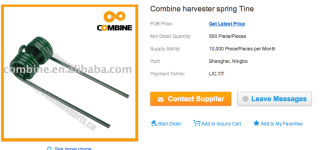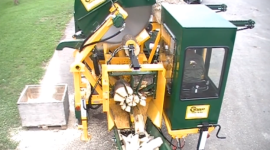Look for something that uses a high grade steel wear part such like a roadgrader cutting edge = a replaceable section. And then cut that hardened steel wear part into 4 or 6 peices. Someone here probably has better suggestions what wear part to look for.
I don't know how to assess the heat affect on the cutting edge, but could you set up to weld with MOST of the cutting edge sitting in water? Or wet it before welding and if the cutting edge starts to steam (or dries up) then douse the whole thing.
If your welds are not much in bending I would go at it with 180 amps. I weld mostly with 120v and I can tell you that welds can be made a lot stronger than some folks think. You will be in a good position to test it, don't worry so much about those who aren't out there actually building stuff and mashing on it.
1/2" welded both sides? Peice of cake. I'm sure you can easily attain full penetration by welding 2 sides. For 1" I'd still do it with 180 amps and with confidence. If preheating (and not worrying about the temper) I'd preheat with a roofing or weedburner torch attached to a large propane cylinder. Or tack it together and set it in a good hot campfire. A little 1 .lb MAPP cylinder won't get you anywhere.
Good thing about having a welder - steel is such a great material you can just cut it off and do-over in many cases. Sometimes a test & do-over takes significantly less time than the research to "do it once." So what if you have to build it up again once a year? Big problem for the average joe, but you have a welder, it's trivial for you.
I'm pretty sure i know what you're describing (4 way or 6 way head). If you can post a pic of your project or the components, or find a similar item on google images, you may get better suggestions. Hope this helps.
![IMG_20141022_000025[1].jpg IMG_20141022_000025[1].jpg](https://www.tractorbynet.com/forums/data/attachments/359/359252-78d15fe3bf21fefeccc8544bb6847f72.jpg)
![IMG_20141023_235028[1].jpg IMG_20141023_235028[1].jpg](https://www.tractorbynet.com/forums/data/attachments/359/359222-432803f354519ed926360af8b8026b83.jpg)
![IMG_20141023_235048[1].jpg IMG_20141023_235048[1].jpg](https://www.tractorbynet.com/forums/data/attachments/359/359237-8c67dc61ac3a8abe25d3a93d5a7f3212.jpg)


